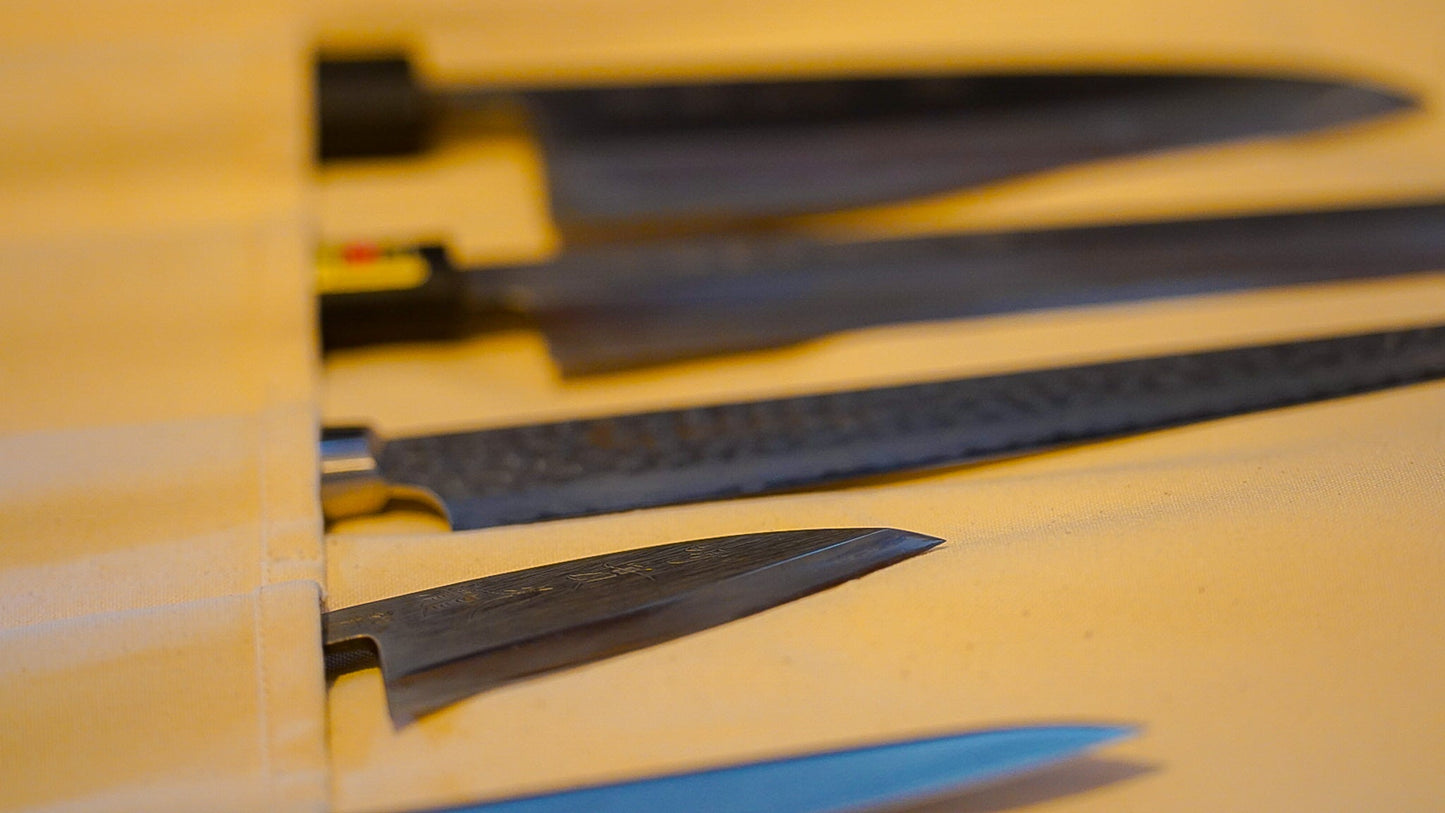
Choosing a knife is a very important point when cooking. In particular, many people are unsure whether to choose a Western knife or a Japanese knife. In this article, we will clearly explain the differences between Western and Japanese knives, the materials used for each, and which one is right for you.
1. What are Western knives?

Western-style knives are crafted based on European and American culinary traditions.
Typical examples include the chef’s knife (gyuto) and the petty knife.
These knives are generally double-edged, making them versatile and well-suited for slicing meat, fish, and vegetables.
Thanks to their adaptability across a wide range of ingredients, they are widely used as all-purpose knives in both home and professional kitchens.
2. What are Japanese knives?

Japanese-style knives are traditional blades rooted in Japan’s rich culinary culture.
They include specialized types such as the yanagiba, deba, and usuba, each designed for specific tasks.
Typically single-beveled, these knives are known for their exceptional sharpness.
They are ideal for precise cuts—such as slicing sashimi—where presentation and visual elegance are essential in Japanese cuisine.
3. Differences between Western and Japanese knives

■ Blade Characteristics
Western-style knives typically have a double bevel, meaning the blade is sharpened symmetrically on both sides. This makes them easy to handle and highly versatile.
Japanese knives, on the other hand, are often single-beveled, making them ideal for precise, delicate cuts.
■ Common Materials
Both types of knives are commonly made from stainless steel or carbon steel.
・Stainless steel is rust-resistant and easy to maintain, making it great for everyday use.
・Carbon steel offers a sharper edge but is more prone to rust, so it requires careful upkeep.
Japanese knives often use traditional steels like White steel (Shirogami) and Blue steel (Aogami), while Western-style knives frequently feature molybdenum steel or high-carbon stainless steel.
■ Ease of Maintenance
Western knives are often made of stainless steel, making them relatively low-maintenance.
Japanese knives, especially those made of carbon steel, require more care. It's best to dry them thoroughly after use and apply a thin layer of oil before storage to prevent rust.
■ Which One Should You Choose?
If you're preparing a wide range of dishes on a daily basis, a Western knife is a great choice for its versatility and ease of care.
If you focus on Japanese cuisine or enjoy detailed, precise cuts, a Japanese knife may be the better fit.
Both styles have their strengths—the right knife for you depends on your cooking style and personal preferences.
■ Final Thoughts
Whether you choose a Japanese or Western-style knife, you're making a great investment in your cooking.
Understanding the unique features of each type will help you select a knife that fits your needs and enhances your time in the kitchen.
Choosing the right knife can make cooking even more enjoyable.












